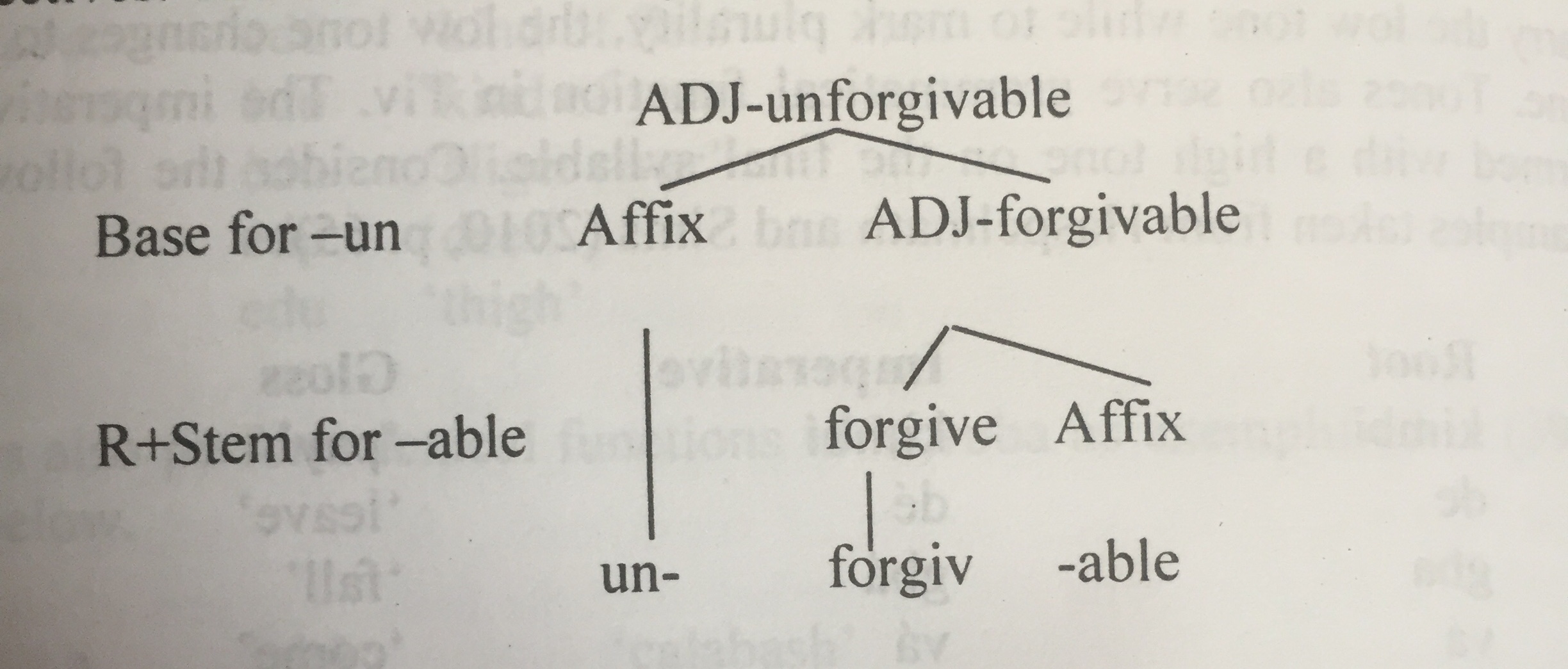Bolanle Elizabeth Arokoyo
Morphology Lecture Series #VII
We will briefly look at complex derivations and zero morpheme now. The last lecture was Affixes. Take your time to go through it.
1. Complex Derivations
There could be more than one affix attached to a morpheme; this is because derivations can apply more than once thereby resulting in words with multi-layered internal structure.
The internal structure of a word could have multiple levels. When complex derivations like this occur, derivational affixes must combine with appropriate type of base to form a word.
The following words uncomfortable, unpredictable, and unforgivable for example have passed through three levels of derivations respectively. The bases of the words are verbs to which the suffix –able is attached to derive adjectives, comfortable, predictable and forgivable.
The prefix un- a negative prefix, is then attached to the adjectives to still derive adjectives. The derivation of unforgivable is shown in the following tree diagram:

The derivation can only go the way it has gone and not attaching the prefix un– before the suffix –able to arrive at the words.
Studying the internal structure of words means that the affixes are not just attached anyhow, but follow particular system.
2. Zero Morphemes
Zero morphemes, also referred to as null morphemes, are morphemes that have no phonological manifestation.
The morpheme is present but it has no physical manifestation therefore the two forms are homophonous.
The zero morpheme is involved in the formation of some English plural nouns, for example fish, deer, salmon, sheep, tuna, etc. do not change in shape to mark either singular or plural.
Other instances are some irregular verbs in English whose forms do not change, for example, put, let, shut, spread, cut, cast, etc.
The forms for the past and past participle do not change. The morphemes are present but have zero phonological representations.
Exercises
1. Divide the following words into the constituent morphemes. State the kind of morphemes each is made of.
advancement truck drivers
caught. stopped running
abreast along sleeps darken
worst grateful pegs
2. Divide the following words into morphemes. List the free and bound morphemes separately. Describe any problematic morpheme.
exemplify unkempt wieldy
recognition omission selfish
unimportant computerize
3. Draw trees for the following words.
selfish beautiful impossible
understandably
4. Provide at least twenty examples of words with zero morpheme.
5. Describe zero morpheme with ample illustrations.
NB
a. Excepts are taken from Arokoyo (2017).
b. A good knowledge of principles of morpheme identification is required for you to understand the concepts discussed.
c. We will start our discussion on Derivational Morphemes in the next class.
References
Arokoyo, Bolanle Elizabeth. (2017). Unlocking morphology. Ilorin: Chridamel Publishing House.
